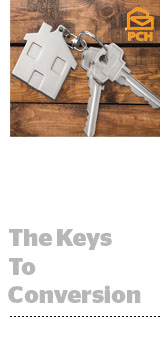
Most people know Publishers Clearing House (PCH) for marketing magazine subscriptions and million-dollar sweepstakes prizes, but it’s also a bonafide publisher.
The company has scaled to about 1.6 billion impressions per month, and out of its $1 billion in revenue each year, about 50% of its profits comes from media, said Steve Bagdasarian, GM of advertising and monetization for PCH.
PCH claims it sits on unique, first-party data that helps marketers shorten consumers’ paths to conversion.
“We have this massive installed, loyal user base – millions of unique users, and 87% of them come back every day for the brand,” Bagdasarian said. “Our sweepstakes are a big driver, but we also have a lot of social gaming experiences and news and content experiences that keep them coming back to our properties.”
When advertisers set up a private marketplace (PMP) with PCH, they’re usually looking to access an audience that’s more likely to convert, whether the desired action is an app download or install, purchase or other form of lead gen, given the publisher’s roots in direct response.
The company solves very specific use cases for advertisers, such as inspiring someone to redeem a coupon or setting up a survey for people who shop for their product at Kroger, Bagdasarian said.
PCH is doubling down on a combination of CRM-based and behavioral data sets.
Its legacy in direct mail, which stems from its magazine marketing business, gives it CRM data like name, address, household income and other demographic information, in addition to the data gleaned from user-authenticated games and sweepstakes.
In 2014, PCH acquired mobile marketing platform Liquid, which yielded access to more mobile user data.
It uses behavioral and intent signals to tailor experiences for new and repeat users.
“The novelty of winning the Powerball at 25 is enough for many people to jump on board, so we tend to bring a lot of users in who may be millennials or younger, and they stick around briefly and then they’re gone,” Bagdasarian said. “But then we see this trend where they come back when they turn 35 and might be loyal for years to come.”
So PCH is broadening its targeting strategy to include new demographics like 35-plus heads of household and females.
It’s also looking to reach heavily consistent, highly engaged digital users who show up every day, take an action, engage with ads or watch videos through to completion.
Although PCH doesn’t license its raw data, it is examining ways it can expand upon its deterministic, first-party data sets with behavioral insights.
“There’s a lot of discussion internally about how we broaden the concept of ‘winning,’ because sweepstakes are calibrated for a certain caliber of user and demographic,” he said. “So, we’re really focused on looking at a broader standpoint of winning [and what offers] we can associate with it and pushing toward native and contextual experiences.”
This post was syndicated from Ad Exchanger.

More Stories
Pew Survey Shows Education Level and Party Affiliation Tied to Views on Freedom of the Press
Google Tops Q1 Estimates with $90B in Revenue Amid Antitrust Turmoil
The Tobacco-Free Future of Phillip Morris With Marian Salzman